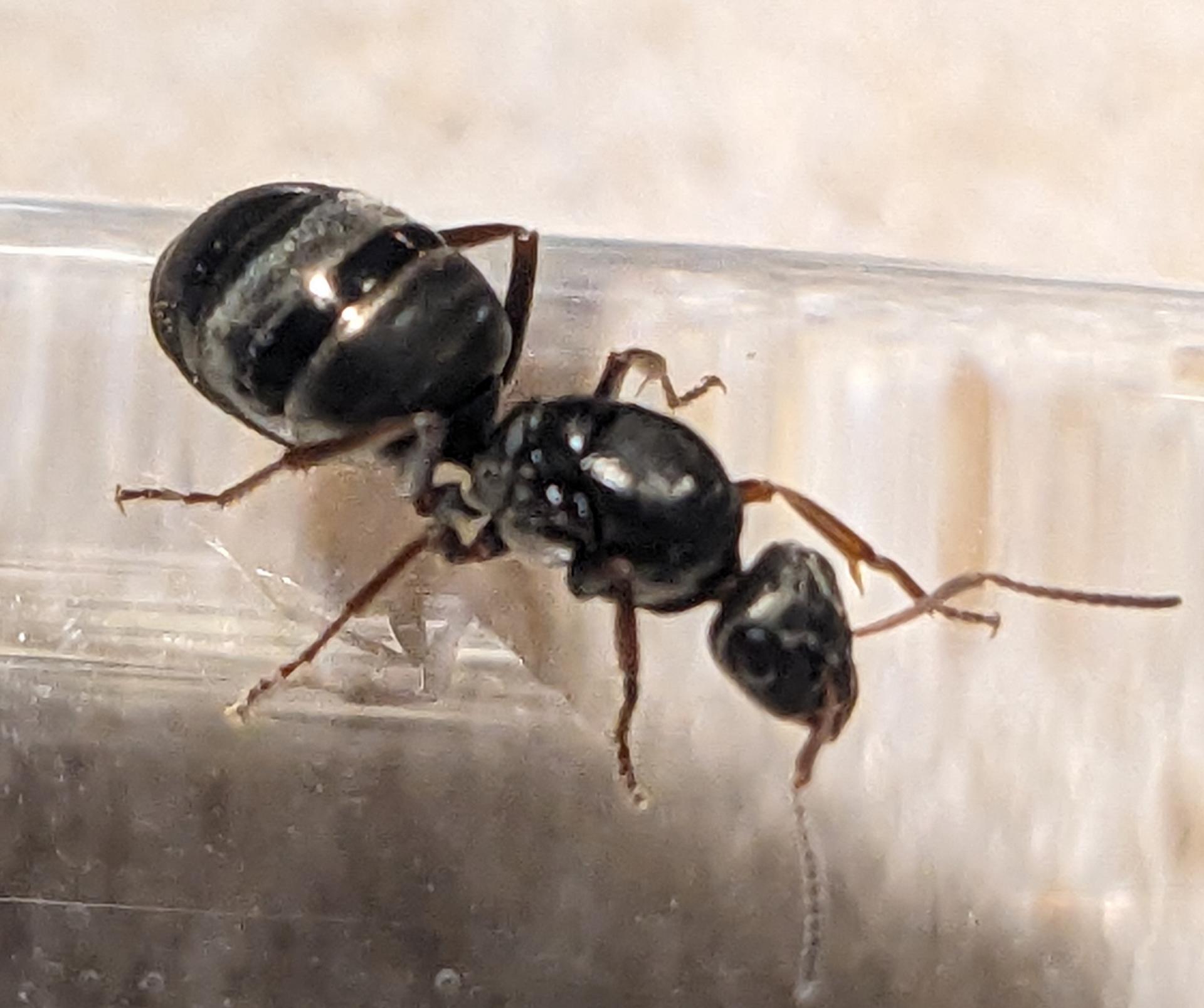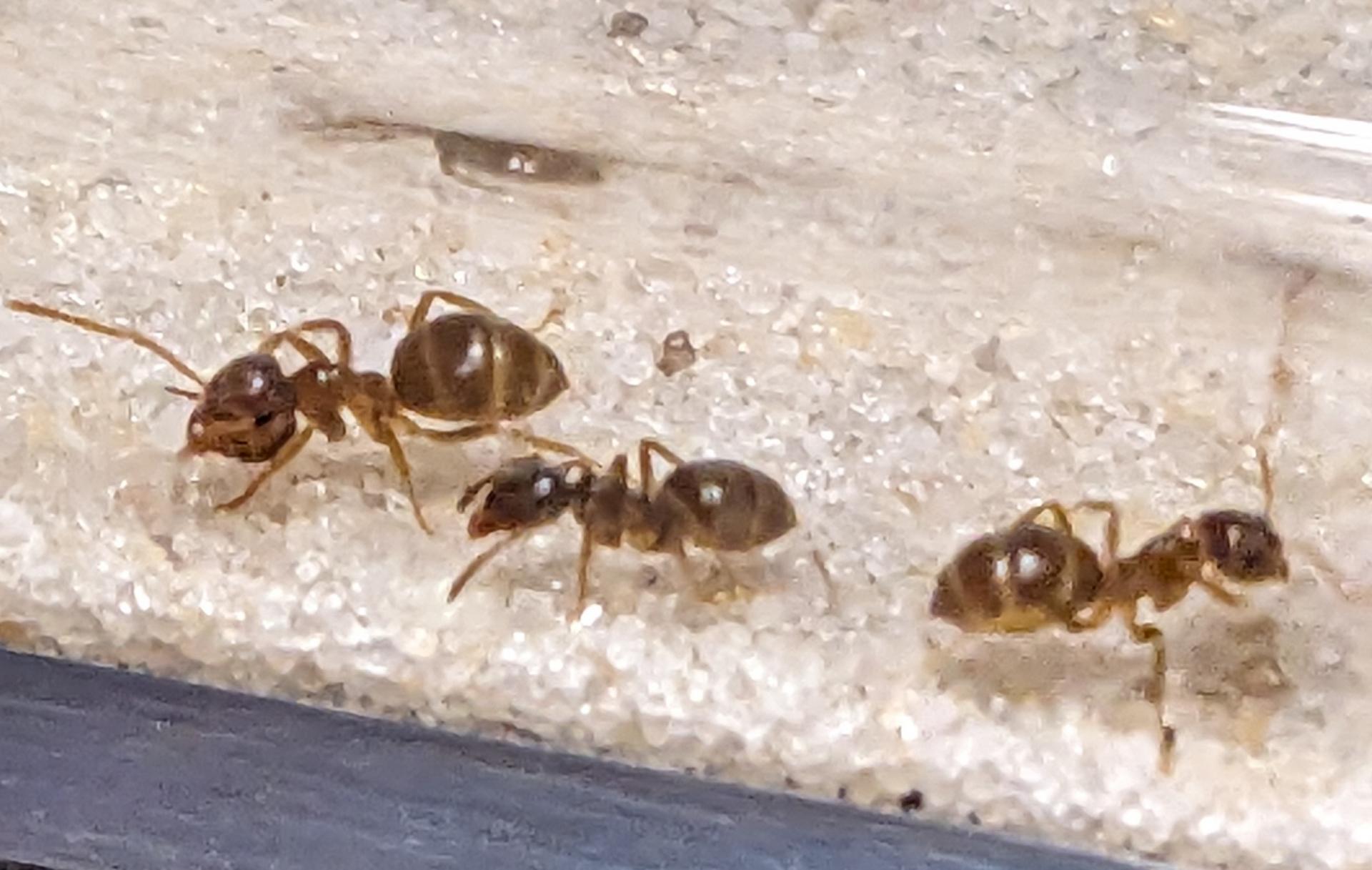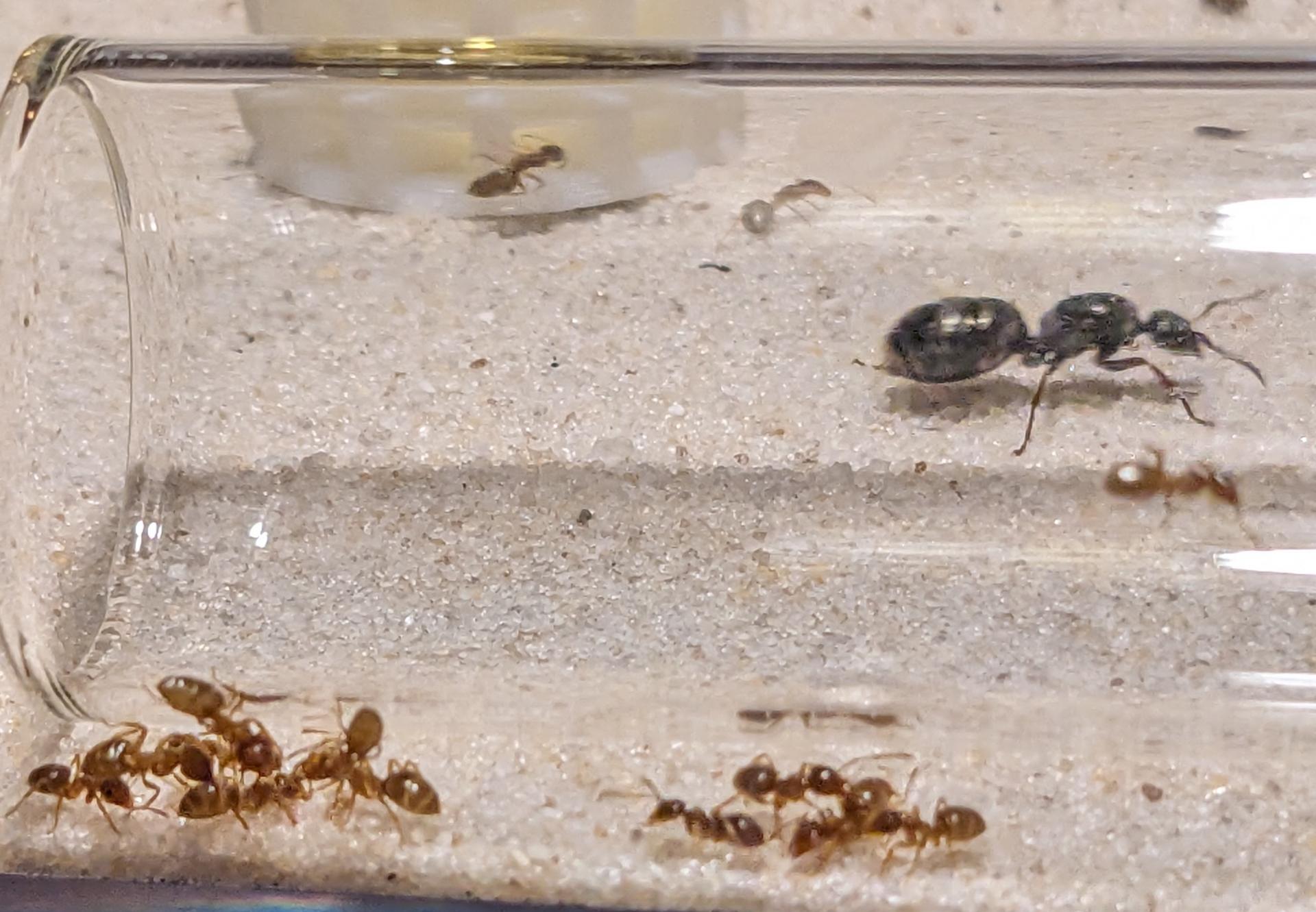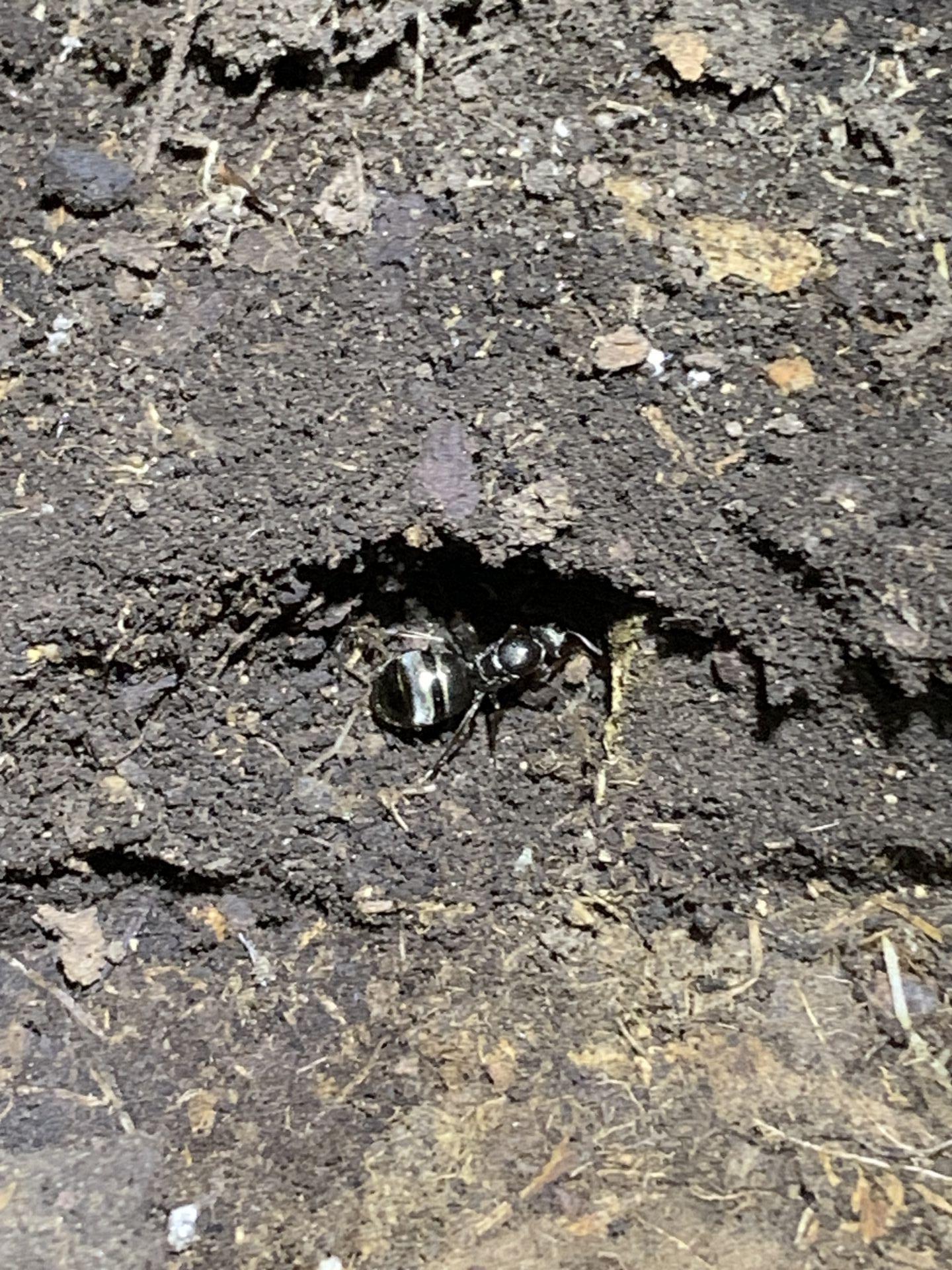I went out anting tonight in Payson Canyon in northern Utah at about 6,400 feet elevation. I found an incredible amount of ant diversity in the area I was looking with about 40-50 different colonies of 10 different species in a 25 meter area. I found what I assume were many parasitic Lasius colonies with their hosts.
Under one rock I spotted a young mixed colony with a queen and some workers. The queen was very fast so I immediately picked her up with my tweezers and put her into a container, and then aspirated some of the workers and put them into a different container. Once I got home I moved them into a tubs and tube setup, but it quickly became apparent that something wasn't right. The queen to me appears to be a Formica argentea or fusca, and the workers some sort of Lasius species. I think perhaps a parasitic Lasius species which I saw many colonies of within about 2 meters of this colony.
Now I know that Lasius doesn't parasitize Formica, but I did read that sometimes some Formica and Lasius species can live in symbiosis together. Since I combined the queen and workers together the queen has appeared very nervous and continues to hang out on top of the container edge right next to the fluon and on top of the test tube where the workers don't go. Any time she ventures from those areas and comes into contact with a worker and their antennae touch, both worker and queen nervously scurry and run away.
I continued to monitor the situation to make sure the queen wasn't killed, but at this point I've decided to separate them as I'm guessing what happened is either it was a left over Formica queen from last summer, or a Formica queen that was living in symbiosis with a Lasius satellite colony of one of the larger nearby colonies.
At this point I'm not really sure what else to do but maybe take the workers back to their colony, and try and raise the Formica queen without workers in a test tube and hope she produces. I swear that I saw some darker colored workers that were more like the queen and even aspirated some but when I got home and looked with better lighting I couldn't find any, and there was no sign that there had been any in the container at all.
Formica queen?
Lasius workers?
Size comparison
If anyone is able at all to identify these that would be helpful as I'm trying to piece together what happened here. In the past I have been notoriously bad at identifying Formica and Lasius queens, but now that I have had one of each from last summer I feel more confident in saying that this queen seems way too large to be a Lasius, and these workers too small to be Formica, but my experience is limited to only a few species of each. Also as I'm writing this it occurs to me that maybe this queen is a smaller Camponotus queen? I've only really found Camponotus vicinus and Camponotus sansabeanus, so if it was a smaller Camponotus queen I could easily see myself misidentifying this one. I was searching Payson Canyon because there have been reported Camponotus flights in that canyon this week.




















